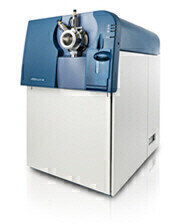Mass Spectrometry & Spectroscopy
AB SCIEX TripleTOF® and QTRAP® technologies helping researchers Solve a Mystery about Type 2 Diabetes Drug
Nov 25 2013
Researchers from St. Vincent’s Institute of Medical Research in Melbourne, Australia, in collaboration with researchers at McMaster University in Canada, are reportedly the first to discover how the type 2 diabetes drug metformin actually works, providing a molecular understanding that could lead to the development of more effective therapies. Mass spectrometry technologies from AB SCIEX, a global leader in analytical technologies, played a critical role in the analysis that led to this breakthrough finding. The research is published in this month’s issue of the journal Nature Medicine.
Doctors have known for decades that metformin helps treat type 2 diabetes. However, questions had lingered for more than 50 years whether this drug, which is available as a generic drug, worked to lower blood glucose in patients by directly working on the glucose. People with type 2 diabetes have high blood sugar levels. They have trouble converting sugar in their blood into energy because of low levels of insulin. Treating this condition, metformin is considered the most widely prescribed anti-diabetic drug in the world.
Until now, no one had been able to adequately explain how this drug lowers blood sugar. It turns out, according to the new study by Australian and Canadian researchers, that the drug works by reducing harmful fat in the liver. People who take metformin reportedly often have a fatty liver, which is frequently caused by obesity.
“Fat is likely a key trigger for pre-diabetes in humans,” said Professor Bruce Kemp, PhD, the Head of Protein Chemistry and Metabolism at St. Vincent’s Institute of Medical Research. “Our study indicates that metformin doesn’t directly reduce sugar metabolism, as previously suspected, but instead reduces fat in the liver, which in turn allows insulin to work effectively.”
The breakthrough in pinning down how the drug functions began with the researchers making genetic mutations to the genes of two enzymes, ACC1 and ACC2, in mice, so they could no longer be controlled. What happened next surprised the researchers: the mice didn’t get fat as expected, but Associate Professor Gregory Steinberg, PhD at McMaster University noticed that the mice had fatty livers and a pre-diabetic condition. Then the researchers put the mice on a high fat diet and they became fat, while metformin did not lower the blood sugar levels of the mutant mice.
The findings are expected to now help researchers better directly target the condition that affects over 100 million people around the world, according to published reports. It is also believed that with the mystery of metformin solved, the application of the drug could go beyond just diabetes and potentially be used to treat other medical conditions.
“AB SCIEX mass spectrometry solutions help researchers explore big questions and conduct breakthrough studies, such as this remarkable type 2 diabetes study,” said Rainer Blair, President of AB SCIEX. “In order to understand disease at the molecular level, researchers need the sensitive detection and reproducible quantitation provided by AB SCIEX tools. We enable the research community to solve biological mysteries and rethink the possibilities to transform health.”
For the research conducted by the Australian and Canadian researchers, the analysis at the molecular level was optimized on AB SCIEX instrumentation, including the AB SCIEX TripleTOF® 5600 and the AB SCIEX QTRAP® 5500 system. The TripleTOF system, with its high-speed, high-quality MS/MS capabilities, was used for the discovery of key proteins and phosphopeptides. The QTRAP system, with its high sensitivity MRM (multiple reaction monitoring) capabilities, was used for quantitation of metabolites, including nucleotides and malonyl-CoA.
Digital Edition
International Labmate 49.6 - Sept 2024
September 2024
Chromatography Articles - HPLC gradient validation using non-invasive flowmeters Mass Spectrometry & Spectroscopy Articles - From R&D to QC, making NMR accessible for everyone: Putting NMR...
View all digital editions
Events
Oct 30 2024 Birmingham, UK
Oct 30 2024 Manchester, UK
Nov 11 2024 Dusseldorf, Germany
Nov 12 2024 Cologne, Germany
Nov 12 2024 Tel Aviv, Israel



















